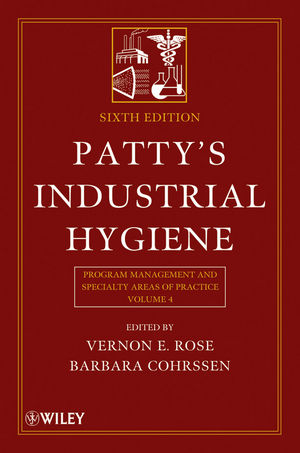Blunt talk. The ASSE president focused on fatalities to back up her claims. Prior to the recession of 2008, which contributed to declines in work-related fatalities in 2009 (4,551) and 2010’s preliminary data (4,547), fatalities had leveled off and flat-lined at around 6,000 per year since 1992, according to the U.S. Bureau of Statistics.
Do you feel safety efforts at your workplace have stalled?
“The stall”
“I have seen the stall occur throughout my career,” Norris told ISHN. She recited the common pattern: an organization hires its first safety professional; safety gets a lot of attention; the program improves; then energy wanes; imagination dims; the safety program remains alive, but in a rut. Or in a maintenance mode. The safety professional becomes a desk jockey. Meetings are stale. Resources frozen. The organization is more vulnerable, but its attention wanders away from safety.
Is this the picture of your safety and health program in 2012?
Too accepting?
Many programs are running lean. More safety and health budgets will be cut in 2012 (20%) than increased (17%), according to ISHN’s White Paper research. The same goes for staffing: 12% of programs will cut heads; 11% will add to headcount. Resource support has stalled out, you could say, with 69% of safety and health programs making do with the same resources they had in 2011.
Does this represent a “plateau of acceptance”? Complacency? Or the reality of hard times in the business world?
Beg to differ
Not all safety and health professionals agree with Norris’s assessment. “Now even a ‘slowing’ in our improvement subjects us to criticism? Come on!” said one pro.
“All I can see is safety professionals and organizations doing the very best that they can to reduce the toll of suffering,” said Paul Difford, a safety professional based in the United Kingdom.
“A ‘plateau of acceptance’ is poetic, but a bit melodramatic,” said Paul LaDuke, a safety and health consultant. “It’s a great headline-grabber, but truth is it’s got a bit of fantasy to it, the idea of a prolonged plateau. I think it is showboating plain and simple that ignores a 30-year trend of steadily declining fatalities.”
James Leemann, a consultant and educator, is also critical of Norris’s call to arms. “To say ‘the nation’s effort to protect workers is stalled,’ is just plan absurd based on the data and, frankly, offensive to those women and men who are working their tails off to ensure the safety and health of their workers.” Leemann points to the 13% drop in fatalities from 2008 to 2010. He allows that the decline might be due in part to the prolonged recession since 2008 and an unemployment rate above 8% and underemployment rates above 22%.
Where fatalities occur
Many safety and health programs are treading water, given the “new normal” of lean resource restraints. But pointing to fatalities might not be the best evidence. A close look at the BLS data shows more than half of all work-related fatalities in 2010 were due to transportation incidents (39%) and assault and violent acts (18%). Aircraft and water vehicle operations, pedestrian and railway safety, and retail stores prone to violent acts fall outside traditional industrial safety and health programs.
The highest rates of fatal occupational injuries in 2010 were found in the agriculture, forestry, fishing and hunting industry (26.8 fatalities per 100,000 full-time equivalent workers); mining (19.8); transportation and warehousing (13.1); and construction (9.5).
The manufacturing industry, where most safety and health professionals work, had 320 fatalities in 2010, for a 2.2 fatal work injury rate. More farmers and ranchers were killed on the job in 2010 (300) and more salesmen and truck drivers (683) than production operators (222).
“Don’t get me wrong, one fatality is way too many deaths,” says one safety and health pro. But the numbers in manufacturing are falling. In 2002, 563 fatalities occurred in manufacturing, for a 3.1 fatal work injury rate. In 1994, 789 fatalities occurred in manufacturing.
Focus on causes of fatalities
If safety programs have stalled on a plateau of acceptance, professionals should zero in on the causes of most work fatalities: motor vehicle safety, truck fleet safety, workplace violence prevention, and fire and explosion protection (fatal work injuries resulting from fires and explosions rose from 113 in 2009 to 187 in 2010, an increase of 65 percent, according to the BLS.
How does your safety and health program score in these critical areas?
If you are going to do a better job with motor vehicle safety, fire and explosion prevention, and violence prevention, it will be without the backing of an OSHA standard. OSHA failed in its one attempt to regulate motor vehicle safety back in the early 1990s. The agency has no standard for preventing workplace violence. Many fires and explosions are caused by combustible dust, and thus far OSHA has ignored repeated requests by the U.S. Chemical Safety Board to issue a combustible dust standard.
Beyond compliance issues
ASSE President Norris in her call to action said “nothing less than a new paradigm” is needed to “unstuck” stalled programs and put an end to the fatality rate statistical plateau. Fundamental to a new paradigm is to put increased focus and resources on often-neglected areas of safety and health programs, such as protecting traveling employees, workplace violence prevention, housekeeping (to eliminate dust accumulations), and specific processes to reduce serious injuries and fatalities.
“We all know that many companies with significantly reduced OSHA recordable rates still experience fatalities and serious injuries,” said Steve Newell of the consulting firm Mercer ORC. For the past 18 months, 42 participants of the group’s Fatality and Serious Injury Prevention Task force have worked on developing new tools and techniques for risk recognition, assessment and mitigation of high-gravity hazards. The tools focus on data analysis, error prevention, error mitigation, risk, leadership, culture and management systems.
Getting out of neutral
Other suggestions for getting safety and health programs out of neutral, in response to Norris’s call for action:
Implement the controversial OSHA injury and illness prevention plan (I2P2);
Ditch the I2P2 standard because all it will accomplish is to chain safety and health professionals to their desks doing more mandatory paperwork;
Make safety a value that does not require strict delineating rules;
Apply accountability systems to safety;
Stop shoving safety at workers and start working with workers on safety activities and measurements;
Stop exhorting for zero injuries because it drives injury reporting underground;
Keep pushing for zero injuries because to do anything less is to be an accepting fatalist;
Recognize that only about 30% of the work force is exposed to physical and chemical hazards of greater intensity or duration than prevalent in the non-work environment, according to Frank Mirer, a professor at Hunter College.
ASSE through the ASSE Foundation is paying the Rand Corporation $100,000 to research the risk-based regulatory systems in the UK and Europe because there is evidence (significantly lower fatality rates) to suggest the risk-based system may be more effective than prescriptive standards.
Transform the vocabulary of safety from compliance assurance to risk reduction. Compliance gives no business a competitive advantage, said Tom Cecich, a member of ASSE’s Risk Assessment Task Force. Organizations that can further reduce real business risks will get a competitive advantage.
Professionals need to get over their reliance on OSHA and its police powers, said longtime ASSE member Tom Lawrence. OSHA is ridden with politics that strongly limit its effectiveness.
“We are our own worst enemy when we fail to acknowledge the critical importance of health and safety laws and regulations,” said Bill Borwegen, head of safety for the Service Employees International Union. “Healthcare, the industry with the fastest-growing number of injuries and illnesses, is the industry with the fewest applicable OSHA standards for its main hazards (safe patient handling and workplace violence).”
“The key is for employers to understand the benefits that can come from a truly engaged work force,” said Rick Fulwiler, a consultant and longtime safety and industrial hygiene manager. Senior management must shift from a transactional leadership style (focus on sales, profits, productivity) to a transformational style focusing on empowering and engaging employees.
Speak up. Take a stand. “How many of us are too unwilling to take the lead on suggesting and/or leading major positive changes in our organizations for fear of not being perceived as a ‘team player’?” asks industrial hygienist Aaron Chen. “We are understaffed, overworked, underfunded, and scared to death that EHS folks are just one misstep away from being the next to be considered not adding any value. Many of us have been told to just grin and bear it and just be glad you have a paycheck.”
Tie safety metrics more closely to sustainability scorecards that are receiving increasing attention from senior managers.
Stop “our collective misuse of OSHA data as the primary metric for driving and assessing safety performance,” said Steve Newell.
Stop flawed incident investigations that prop up the incorrect and really unsupported assumption that most injuries result from unsafe acts, said Newell.
Get rid of the “management failure myth,” said Paul Difford. “ASSE supports the premise that management, not workers, without exception, cause all accidents. All industrial accidents are not causatively traceable to the management system.” Difford in 2011 revised Heinrich’s assertion that the unsafe acts of workers are the cause of 88% of accidents upward to what he calls a “logical” 98%.
No consensus
Reactions to ASSE President Norris’s call to action directly contradict each other. OSHA is good. OSHA is bad. Sustainability is good. Sustainability is PR. Greedy managers are the problem. Careless workers are the problem. It will be difficult to get stalled safety and health programs moving again when the profession has fundamental disagreements on what actions need to occur.
But if nothing else, Norris’s blunt talk about where safety is at in 2012 should have you taking a hard look at the strengths and weaknesses of your workplace’s program — and your contributions.
Steve Newell calls himself “an old dog” who has been in the profession for years, fought the battles, and now thinks about “legacy issues and whether this generation of safety professionals has contributed all it can to further worker safety and health.”
Like Newell, many pros are “old dogs.” The average ISHN reader is over age 50. Norris’s call provides a nudge for you to consider the extent of your contributions. Have you professionally “stalled out”? Burned out? Become too accepting? Most ISHN readers would answer “no.” According to our White Paper research, 43% expect their professional effectiveness to increase in 2012. Only 4% see it declining. ASSE’s Norris would be pleased at this projection of positive energy.






